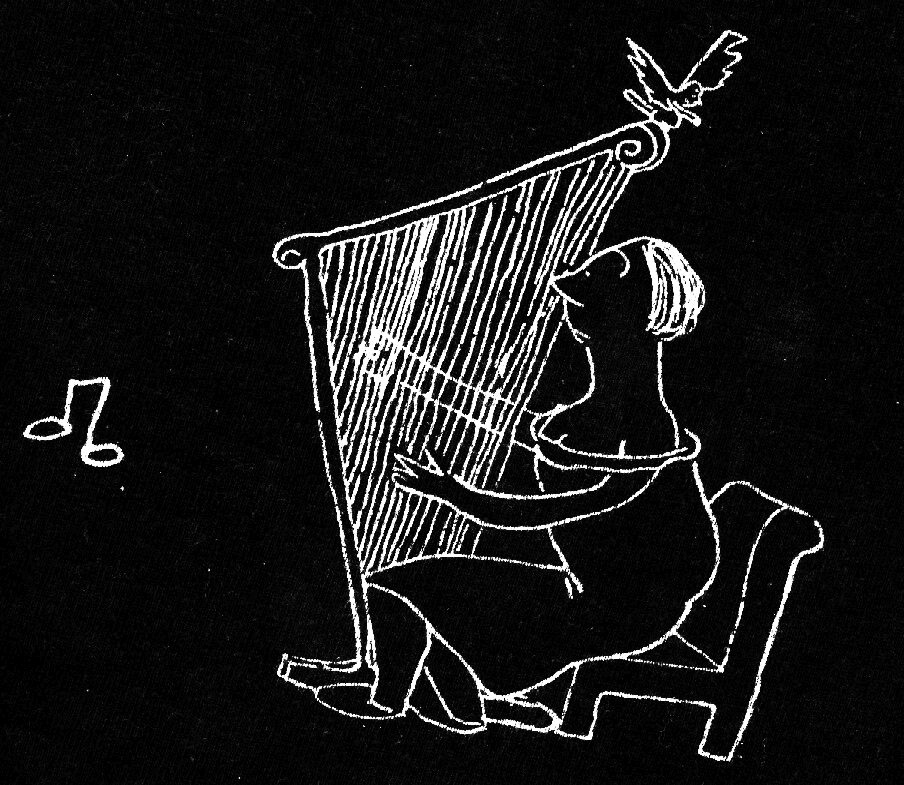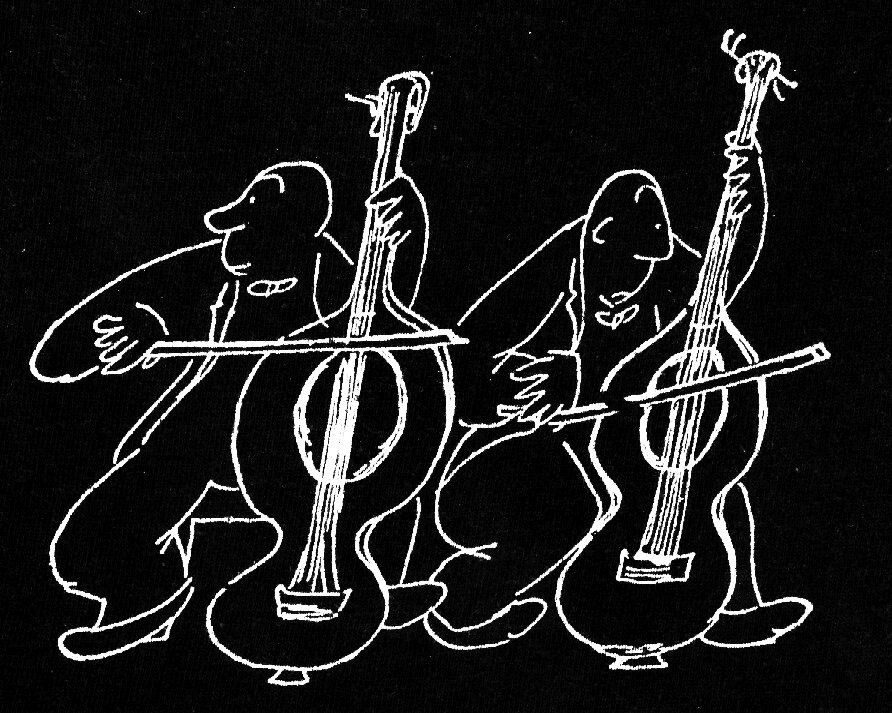|
Programs
The main programs mentioned in the text,
along with what they do and the code for them
add
Given m in R1 and n in R2 (represented in bb),
the program computes the sum m + n
(again, represented in bb)
and puts it in R1. At the end, all other registers
Ďare empty (and in particular the original inputs m and n are lost).
|
1##### 111### 111111### 111111111### 11##### 1111111111
11111111111 11111111111 111### 1111111111 11111111111 11111###
1111111111 11111111111 111111### 11##### 1111111111 11111111111
11### 1111111111 11111111111 1111111### 1111111111 11111111111###
11##### 1111111111 11111111111### 1111111111 11111111###
1111111111 111111111### 1##### 111### 111111### 111111111###
11##### 1111111111 1### 1111111111 111111### 111111111### 11#####
1111111111 111### 1111111111### 1111111111 1### 11##### 111###
11111111### 1### 111# 1111111111 11111111111 11111111111 1####
111## 1111111111 11111111111 11111111111 111#### 111# 1111111111
11111111111#### 111## 1111111111 11111111111 11#### 1### 111#####
111111### 111### 1## 1111#### 1# 111111####
|
bump
This program takes a program p in R1 and a unary number 1n
in R2, and it returns a program which is just like p except that all of the register
numbers have been "bumped up" by n.
|
1# 1## 1## 1## 1## 1## 1## 1##### 1### 1### 1### 1##### 1# 11### 111### 1# 11111#### 1##### 1# 11### 1111111111 11### 1# 11## 11##### 1# 11### 1111### 1# 11# 111111#### 1## 1111111111 1111111111#### 1##### 1# 11### 1111111111 111### 1# 11## 11##### 1# 11### 1111### 1# 11# 111111#### 1## 1## 1111111111 11111111111 11111111111 1111#### 1##### 1# 11### 111111### 1# 1## 1## 1## 1111111111 11111111111 11111111111 11111111111 11#### 1##### 1# 11### 1111111### 1# 1## 1## 1## 1## 1111111111 11111111111 11111111111 11111111111 11111111111 1#### 1##### 1# 11### 1111111111 111111### 1# 11## 11##### 1# 11### 1111### 1# 11# 111111#### 1## 1## 1## 1## 1## 1111111111 11111111111 11111111111 11111111111 11111111111 11111111111 111111111####
|
compare
Compares the contents of R1 and R2.
If they are exactly the same (except for
spaces), the program outputs a 1 in R1; if not, it
leaves R1 empty.
|
1##### 111111### 111111111### 11##### 1111111111 1### 1111111111###
111111#### 11##### 1111111111 11111### 111111### 11111### 11##### 111###
1111111111 111#### 1### 1##### 111### 11#### 111#### 11##### 1111###
11#### 111#### 1#
|
clear1
Clears R1 out.
|
1##### 111### 11#### 111####
|
By changing the first 1#### to 1n, we clear Rn.
copym,n,p
This program copies Rm to Rn, using Rp as a temporary
storage register. When it is run, Rp should be empty,
or else Rn would also get whatever is in Rp to begin with.
| 1m#####
11111111###
1111###
1n##
1p##
11111####
1n#
1p#
11111111####
1p
#####
111111###
111###
1m## 1111####
1m# 111111#### |
One has to put in unary numbers for m, n, and p.
These also should be different numbers.
diag
When diag is run with a word x
in R1, the result is
φwrite(x) + x in R1.
And running that gives φx(x) in R1.
|
1##### 11111111111### 111111### 11## 111# 111## 111## 1111111####
11#
111# 111## 11111111111#### 111##### 111111### 111### 1## 1111#### 1# 111111#### 11##### 111111### 111### 1## 1111#### 1# 111111#### |
length
Takes a program in R1 and
tells how many instructions it has, written out as a unary number into
R2.
If R1 does not contain a program, then we do not care what this program does.
|
1##### 1111111### 11#### 11# 1##### 111### 111111#### 111####
|
move2,1
It moves the contents of R2 onto the end of R1,
emptying R2 in the process.
| 11#####111111###111###1##1111####1#111111#### |
The general schema for movem,n is
| 1m
#####111111###111###
1n##1111####
1n#111111#### |
popn
Pops the first item from Rn.
self
Outputs itself in R1.
|
1# 1## 1## 1## 1## 1## 1# 1# 1# 1# 1# 1# 1# 1# 1# 1# 1# 1## 1## 1## 1# 1# 1# 1# 1# 1# 1## 1## 1## 1# 1# 1## 1## 1# 1# 1# 1## 1# 1# 1# 1## 1## 1# 1# 1# 1## 1## 1# 1# 1# 1# 1# 1# 1# 1## 1## 1## 1## 1# 1# 1## 1# 1# 1# 1## 1# 1# 1# 1## 1## 1# 1# 1# 1# 1# 1# 1# 1# 1# 1# 1# 1## 1## 1## 1## 1# 1# 1# 1## 1## 1## 1## 1## 1# 1# 1# 1# 1# 1# 1## 1## 1## 1# 1# 1# 1## 1## 1## 1# 1## 1## 1# 1# 1# 1# 1## 1## 1## 1## 1# 1## 1# 1# 1# 1# 1# 1# 1## 1## 1## 1## 1# 1# 1## 1## 1## 1## 1## 1# 1# 1# 1# 1# 1# 1## 1## 1## 1# 1# 1# 1## 1## 1## 1# 1## 1## 1# 1# 1# 1# 1## 1## 1## 1## 1# 1## 1# 1# 1# 1# 1# 1# 1## 1## 1## 1## 1##### 11111111111### 111111### 11## 111# 111## 111## 1111111#### 11# 111# 111## 11111111111#### 111##### 111111### 111### 1## 1111#### 1# 111111#### 11##### 111111### 111### 1## 1111#### 1# 111111####
|
u
A "universal program" in the following sense:
If u is started with p in R1 and all other registers are empty, then eventually we halt with x in R1,
where x is the result of starting p in R1 with all other registers empty.
See Lesson Six
for the explicit code.
write
When write is started with x in R1
and R2 empty, we eventually halt with a
word
y = φwrite(x)
in R1 and all other registers empty.
Then running
y with R1 empty results in x back in R1 and all
other registers empty.
In symbols,
φ φwrite(x)( ) = x.
|
1#####111111111###11111###11#11##11##111111####11#11##
|
|
111111111####11### ##111111###111###1##1111####1#111111####
|
| 


